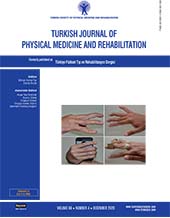Comparison between Russian and Aussie currents in the grip strength and thickness muscles of the non-dominant hand: A double-blind, prospective, randomized-controlled study
Patients and methods: This double-blind, prospective, randomized-controlled study included a total of 30 healthy women (mean age: 20.2±1.7 years; range, 18 to 25 years) between May 2018 and July 2018. The participants were randomly divided into three groups: control group (CG, n=10), Aussie current group (ACG, n=10), and Russian current group (RCG, n=10). All three groups underwent a force test with a gripping dynamometer and the collection of images of the superficial and deep flexor muscles of the fingers with diagnostic ultrasound. The CG received a fictious current stimulus, while the other two groups received the designated stimuli from their currents. Further evaluations were performed after 24 h of the 12th application of the current.
Results: For grip, there were no significant differences in the moment of evaluation and interaction, while the effect size yielded certain points to advantages of force gain for the group using the RCG. The thickness of the superficial muscles showed a significant difference for the first evaluation between CG and RCG (p=0.014) and between RCG and ACG (p=0.010), indicating a larger effect size for RCG.
Conclusion: Our study results show that the Russian current is proven to be the mode which yields the most optimal results.
Keywords : Electric stimulation therapy, muscle strength dynamometer, skeletal muscle

















